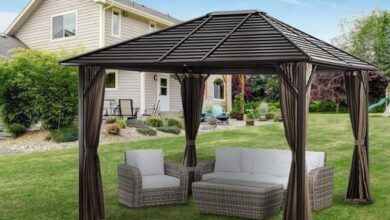How Do You Know When to Repair Your Roof?

The health and integrity of your roof is essential to the overall protection of your family and home. As an impregnable barrier against the elements, a well-maintained roof should be a top priority. Timely repairs are vital, as signs of distress can easily be missed. To keep your family safe, watch out for these things and take prompt action.
Signs to Keep an Eye on
Here are some signs that will show you need to repair your roof:
1. Inspecting Your Roof
Conducting regular inspections of your roof is essential in order to detect and address potential issues that can become bigger problems over time. It is recommended that inspections be done at least twice a year or any time adverse weather conditions occur such as strong winds or heavy rain.
Regular inspections will help identify small problems which are much more economical and easier to fix than trying to rectify the issue once it has developed into a larger issue. Inspections should cover the entirety of the roof, including checking for cracked, curled, missing shingles; loose flashing seals; damaged gutters and downspouts; algae, moss, and other signs of wear.
If you have difficulty seeing certain areas or can’t reach high spaces yourself, consider hiring a professional roofer to ensure adequate coverage of the whole roof and an accurate assessment of its condition. By conducting regular inspections on your roof, you can be sure that it is in proper working order and save yourself from costly repairs in the future.
2. Aging Roof
Aging roofs can be a significant factor to take into account when looking into a roof replacement. Normally, an asphalt shingle roof should last anywhere between 20 to 25 years based on its installation and upkeep. If the preexisting roof has surpassed 20 years old, it may be time to start considering swapping it out.
Moreover, it’s essential to check if the prior roofing was taken away or not when installing the present shingles; otherwise, it could lead to more frequent and premature degradation of the roof. In addition, adequate ventilation is necessary for the longevity of any roof and thus should be evaluated too. All in all, scrutinizing your existing roof’s age can offer valuable insights regarding whether you need a new one.
3. Curled Shingle Edges or Cupped Shingle Tabs
Curled or cupped shingle edges are an indication that your roof may require repair, as this is typically a sign of aging and wear. When exposed to extreme weather conditions for too long, the shingle edges can start to curl or cup, impairing their ability to protect the roof from damage and leaks. To check for curled shingle edges, inspect your roof regularly for any visible signs of curling.
In most cases, curling only occurs on the corners and tabs of the shingles however, if there is evidence of widespread curling it could be indicative of other issues such as inadequate ventilation or poor drainage. Fixing curled or cupped shingle edges promptly can help prevent further deterioration and reduce the risk of future problems. To avoid costly repairs in the future, periodically inspect your roof to ensure that all shingle edges remain flat and secure in place.
4. Cracked Shingles
Cracked shingles are a common issue that can be caused by several factors, including wind damage. Depending on the extent of the problem, cracked shingles can be fixed or replaced. If only a few shingles are cracked, then it is possible to simply replace them. However, if the cracking isn’t isolated and random shingles all over the roof are affected, then this may indicate more serious structural issues that warrant replacing the entire roof.
In such cases, it is important to assess whether the existing roof is beyond repair before committing to costly replacements. As an extra precaution, residential property owners should always inspect their roofs for signs of wear and tear regularly as this will help identify problems early on and prevent more significant damage from occurring in the future.
5. Presence of Roof Valleys
Roof valleys are an essential component of any roof system. They allow precipitation such as snow and rain to flow off the roof and into gutters, ensuring that water does not build up in dangerous amounts on the surface of the roof. If these valleys deteriorate or are missing due to age or damage, they can no longer effectively channel this moisture away from the home and instead, it can seep into the structure, leading to costly repairs.
Thus it is crucial to inspect your roof periodically and pay attention to any signs of deterioration such as missing shingles in this area as this could be an indication that you need a new roof. Overall, well-maintained roof valleys are essential for preserving the integrity of your roof and avoiding costly water damage in the long run.
It is essential to understand the importance of regular roof inspections and when to repair your roof. A good rule of thumb is that prevention is always better than cure, as timely repairs and maintenance can spare oneself from significant repair costs down the road. It is key to be aware of early warning signs that may indicate damage, such as missing or cracked shingles, moss growth on the roof, pooling water on the surface, sagging gutters, or ceiling spots in interior spaces.
Regularly inspecting your roof and addressing any issues promptly will go a long way to preserving its integrity and protecting your home from weather-induced damage. Keeping an eye out for these critical signs can make identifying potential problems much simpler and ensure that you are able to take appropriate measures to maintain a secure shelter over your head. For detailed guidance on inspecting your roof and identifying the conditions mentioned above, you can click here: Omega Roofing to access our comprehensive guide on roof maintenance and repairs.





